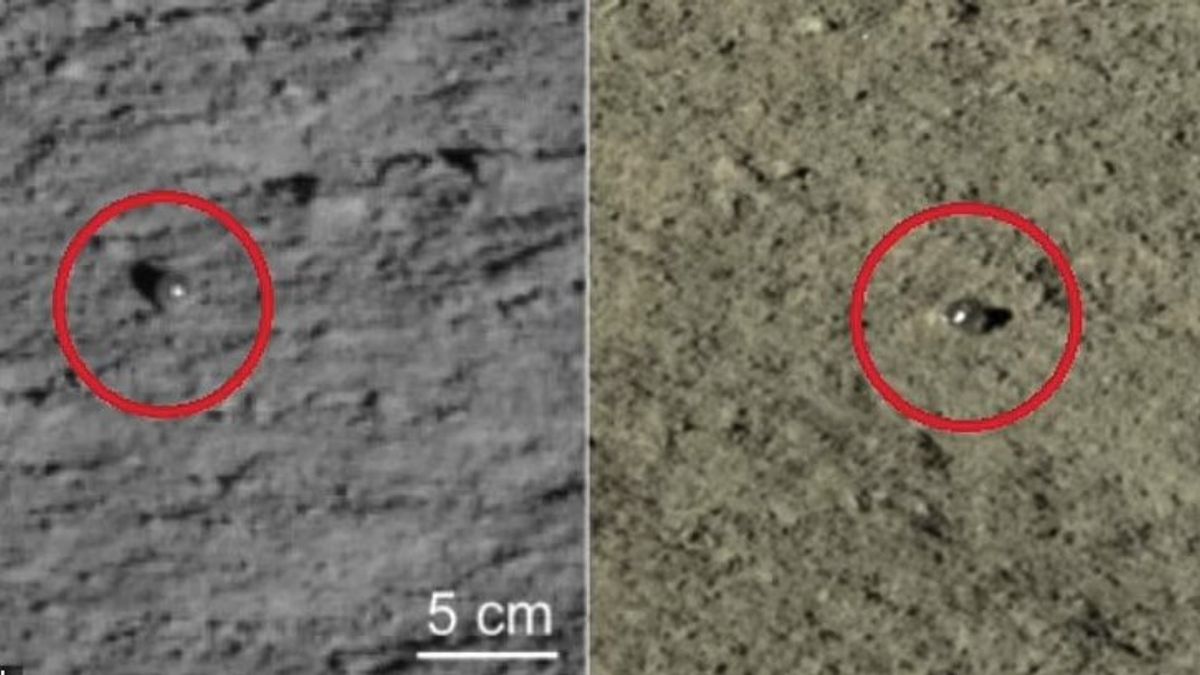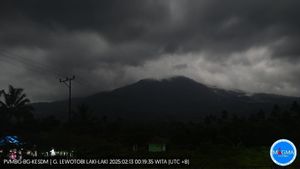JAKARTA – China's lunar rover has sent back new images of the 'dark side' of the moon. This latest image shows the winding path it has taken on the surface.
This rover, Yutu-2, arrived on the moon three years ago with Chang'e 4 - the first spacecraft to ever land on the far side of the moon.
According to data from China's Lunar Exploration Ground Application System, since landing, the solar-powered Yutu-2 has traveled 3,376 feet (1,029 meters) across the Von Kármán crater.
Yutu-2 was launched from China's Xichang Satellite Launch Center on December 7, 2018, and landed less than a month later.
In February this year, the 140kg rover saw two whole spheres of one-inch-thick translucent glass on the far side of the moon.
Small glass "balls" are actually common on the moon, although they are usually less than 3mm in diameter.
According to scientists, this newly discovered glass sphere is much larger, measuring about 0.5 inches to 1 inch (1.5 cm to 2.5 cm).
Glass is formed on the moon when silicate materials – rock-forming minerals – are subjected to high temperatures.
Volcanic glass deposits were formed during explosive eruptions in the moon's history when it was still volcanically active.
New glass can form on the moon because of the heat generated from the meteorite's collision with the lunar surface.
This isn't the first time Yutu-2 has discovered a strange lunar feature. Last year, Yutu-2 also sent a photo of a 'mysterious hut' on the horizon, which was initially difficult for researchers to identify.
On closer inspection, it was revealed in January that it was a rabbit-shaped rock, surrounded by 'dung' and bits of its own food.
The find was coincidental because the explorer's name, Yutu, is Chinese for 'Jade Rabbit'.
The rover is named after a mythical figure in Chinese, Japanese, Korean, and Vietnamese folklore because the dark markings on the Moon are said to resemble rabbits.
In February 2021, Yutu-2 captured images of a 'milestone' rock extending across the lunar surface. This is a phenomenal picture for the Chinese space agency.
SEE ALSO:
The lunar rover saw sharp structures sticking out of the ground after awakening from a 14-day slumber during a frigid lunar night. Yutu-2, which is solar-powered, must indeed 'sleep' when there is no sunlight.
In 2019, just months after landing, Yutu-2 discovered a mysterious dark green 'gel-like' substance.
Yutu-2 has crossed the 186 km wide Von Kármán crater since landing on the moon connected with the Chang'e-4 spacecraft on January 3, 2019. Chang'e 4 is China's fourth mission to the moon and the second to send a rover.
The Chang'e 1 and 2 missions were orbiters, while Chang'e 3 landed on the near side of the moon with the first Yutu rover.
Beijing also launched Chang'e-5 in November 2020, which successfully returned the first lunar sample to Earth in more than 40 years.
China has approved three more missions to the Moon, namely Chang'e 6, 7, and 8, which will be launched from 2024 onwards.
The English, Chinese, Japanese, Arabic, and French versions are automatically generated by the AI. So there may still be inaccuracies in translating, please always see Indonesian as our main language. (system supported by DigitalSiber.id)















